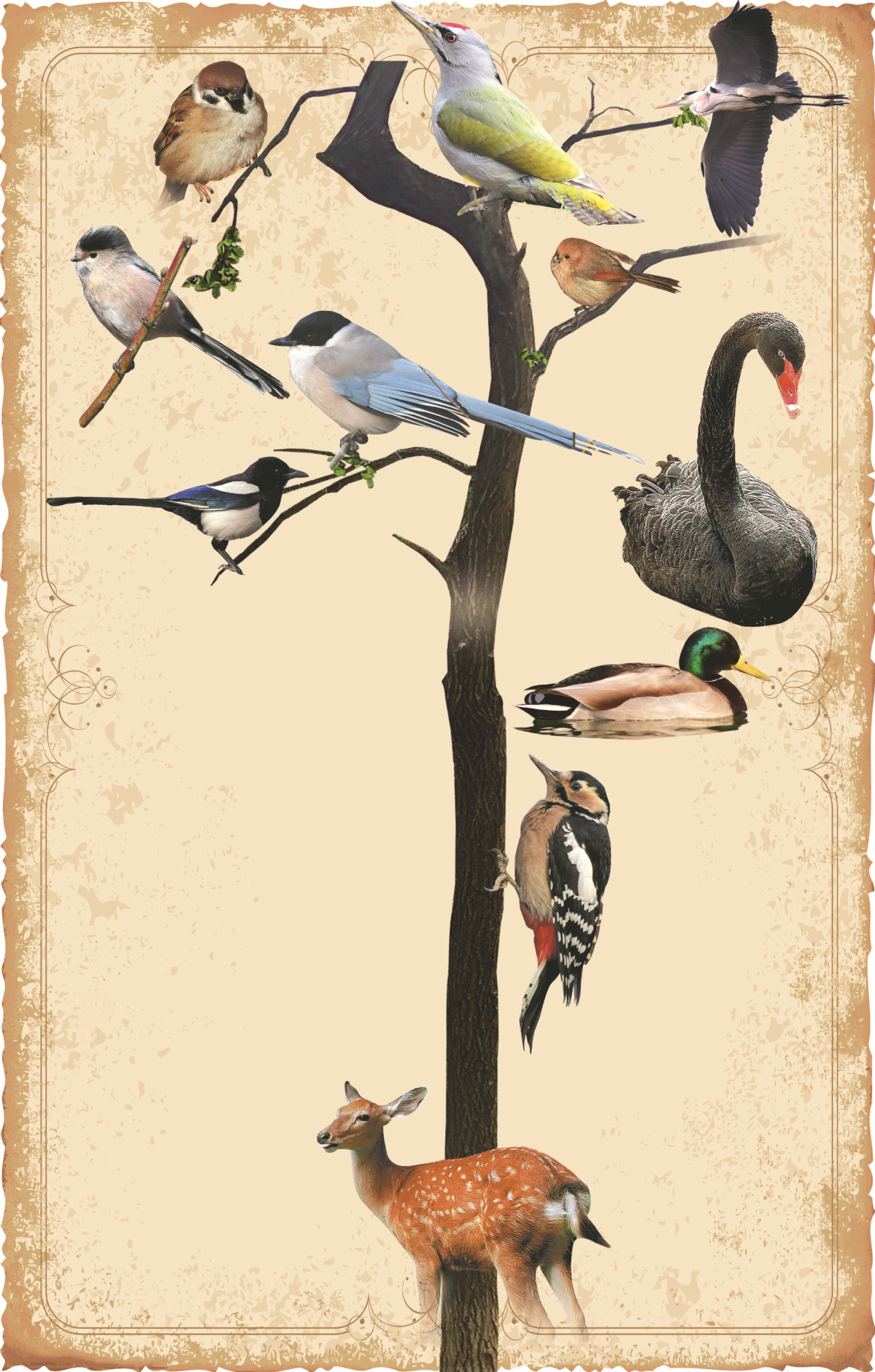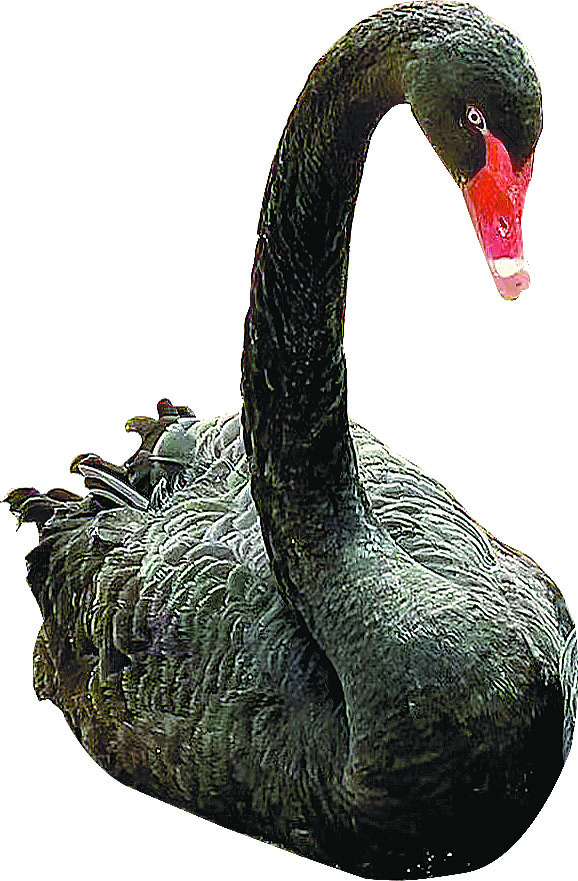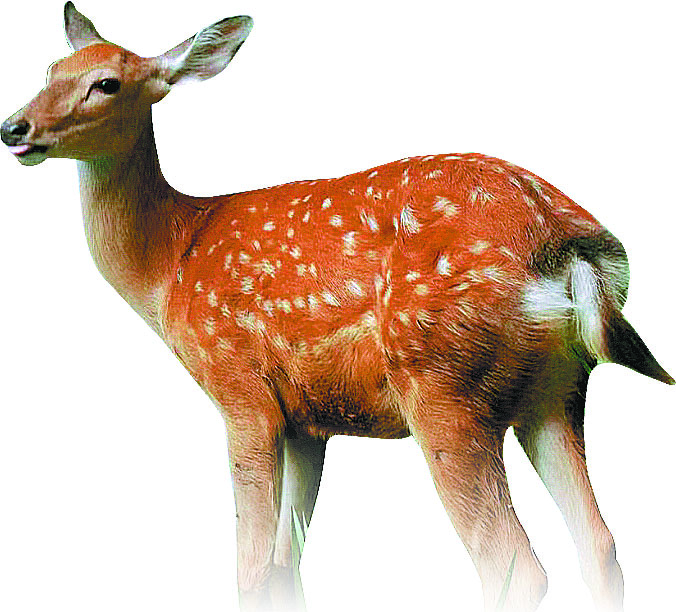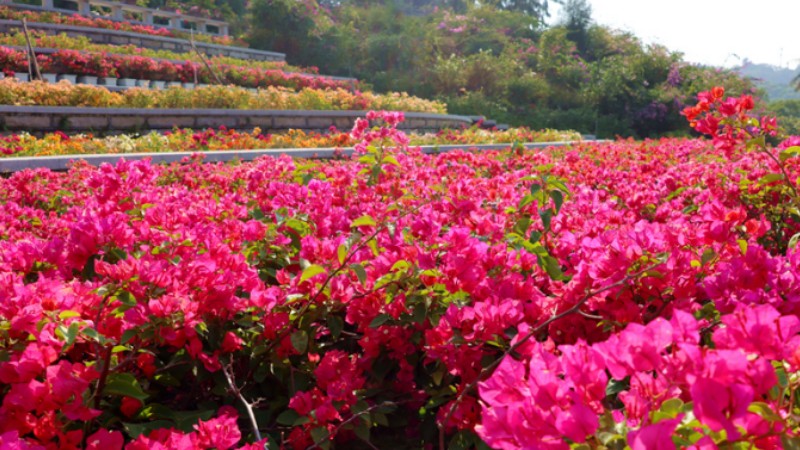Beijing's 'green lung' showcases its natural wonders

More than 300 species of birds have been observed at Olympic Forest Park in Beijing. [GUAN XIANGYU/FOR CHINA DAILY/LU PING/CHINA DAILY]
Birds and other animals offered top-level protection in Olympic Forest Park
Guan Xiangyu, an experienced bird-watcher, was thrilled to hear the sound of a grey-headed woodpecker at dusk in Beijing Olympic Forest Park.
"Listen to this bird, it sounds like a kid laughing rhythmically," Guan said, standing by the lakeside near the south entrance to the park.
From 5:15 pm to 6:15 pm that day in late September, the 33-year-old observed or heard nearly 20 avian species in the park.
They included the mallard, little grebe, grey heron, black-crowned night heron, common moorhen, spotted dove, great spotted woodpecker and the common kingfisher.
Guan also logged sightings or observations of the common magpie, azure-winged magpie, marsh tit, silver-throated bushtit, vinous-throated parrotbill, yellow-browned warbler, dusky warbler and the Eurasian tree sparrow.
The author of My Strange Encounter with Nature-(Tracing the Birds) and the Beijing Birding Map, Guan has loved nature since childhood.
At college in 2009, he took an optional course titled Bird Watching in China. His teacher, Zhao Xinru, an associate professor of zoology at Beijing Normal University and a professional guide with the Beijing Bird Watching Society, took Guan to Olympic Forest Park to watch birds for the first time. "The park was new then, and there weren't that many species to see," Guan said.
Later, Guan began following members of the Beijing Bird Watching Society to observe avian species throughout the city, with Olympic Forest Park being one of the main locations for such activities.
As a student of urban management, Guan completed his senior thesis through a birdwatching survey at the park to research the relationship between avian migration and urban development and ecological conservation.
After he graduated, Guan joined the Beijing Bird Watching Society, which was founded in 2004. As a public welfare organization, the society advocates "scientific bird watching and respect for nature". In addition to doing good work in popularizing science, it conducts many volunteer activities, including bird investigation and protection, and extensive exchanges and cooperation with similar societies worldwide.
"The area of water at Beijing Olympic Forest Park is large enough not only to accommodate open lakes, but also wetlands with undercurrents. As the park's ecosystem has become more complete, vegetation has grown considerably, and the birds have become more abundant, including various types of water and forest species," Guan said.
He is now a full-time leader of bird-watching science popularization activities, and has witnessed the ever-increasing diversity of avian species at the park over the past 14 years.
"More and more people are coming to the park to watch birds. At first, they were mainly college students and researchers, but now more and more seniors and primary and secondary school students are joining them. The seniors enjoy life and relax amid the peace of nature, while the teenagers love exploring the environment around them," Guan said.
"Over the past 14 years, the Beijing Bird Watching Society has issued sound advice on protecting birds, which has been well adopted and implemented. For example, at some parks in winter, rotting reeds in wetlands, where there is an undercurrent, affect the water quality and pose a fire hazard, which can generally be taken care of.
"However, we set aside some small pieces of reed to provide shelter and feeding for birds such as the water rail, bearded reedling, and black-faced bunting. The water rail was first found in Beijing in wetlands at Olympic Forest Park where there is an undercurrent."
Guan said the park also boasts many plants that provide food such as nectar, fruit and seeds for the birds. "Get to recognize the birds in this park, and you will know one-fifth of all the avian species in China," he added.
As the capital's "green lung", Olympic Forest Park, which covers nearly 680 hectares, is also the largest urban green landscape in Asia.
More than 580 kinds of birds can be seen in Beijing, accounting for more than one-third of the avian species in China, and more than 300 species of birds have been observed at the forest park.
The Beijing Wildlife Rescue Center said that on May 18, workers conducting monitoring training at the park found the yellow-breasted bunting, a critically endangered species and a national first-class key protected wild animal.
Guan said, "As wildlife is a barometer of the environment, the appearance of endangered birds in the park indicates that the environment in Beijing is constantly improving."

A black swan rests in the Deer Camp Forest Tribe area of the park. [MEI HUI/FOR CHINA DAILY]
Excellent habitat
In addition to birds, Olympic Forest Park is an excellent habitat for a variety of small mammals. The park has a green coverage rate of 96 percent, with rich forest and water resources, including a total of some 580,000 arbors and shrubs.
Wang Jun, former director of the garden engineering department at Beijing Shi Ao Forest Park Development and Management Co, said the entire park has sufficient natural shrubs and piles of benjeshecken for small animals to hide and avoid danger. Benjeshecken, also known as a "dead hedge", is constructed from materials left over from pruning, clearing or forestry activities.
"In the park, benjeshecken also plays an important role in science popularization. In daily observations, visitors can see small hedgehogs, weasels and other creatures living here," Wang said.
He and his colleagues have made numerous efforts to attract more small animals to the park, including the introduction of lawn areas.
Some parks use cool-season grasses, which thrive in locations with cold winters and hot summers, and look exceptionally tidy and attractive, but as this type of grass can fall victim to the elements, it requires the regular application of pesticides.
If the lawns are sprayed with pesticides, they will not be good for small animals. So the aim of Olympic Forest Park is not solely to create beautiful lawns, but also to establish a diverse biological environment.
After many hours of observation and research, Wang found a good way to make the lawns beautiful, while also being beneficial to small animals' habitats.
"We place other varieties of flowers and grass in the lawns, while preserving a proportion of native grass seeds. By trimming, we achieve a neat and aesthetically pleasing appearance. When the proportion of other types of grass in the lawn reaches 20-25 percent, the lawn is less prone to 'illness', thanks to the mix of varieties. This enables us to almost eliminate the need for pesticides throughout the year, reducing side effects on the environment," Wang said.
Lou Fangzhou, a senior high school student who has visited Olympic Forest Park since 2014 to observe wildlife, said, "The park management has taken measures to create a wildlife-friendly environment, such as leaving a proportion of the wetland with reeds during the winter for wildlife habitats. It has also acted to prevent uncivilized behavior such as feeding wildlife species and preventing crowds from gathering to photograph them.
"In early spring every year, many Asiatic toads lay eggs at the park. At that time of year, the reeds have not yet emerged, so it is easy to observe such scenes up close in wetlands at the park."
Lou said that one year, he saw many newly hatched tadpoles in large groups in the water. The scene was particularly beautiful, so he put his phone into the water to take photographs. However, after a while, he found the screen had become damaged, and it was only then that he realized the phone wasn't waterproof.
"Entering Olympic Forest Park is like opening a gateway that separates wildlife from humans. The park's advantageous location near the city center, its convenient transportation links, free admission, and well-maintained pathways encourage more people to step into nature and get up close to it," he added.

A sika deer in the park [MEI HUI/FOR CHINA DAILY]
Close to animals
This year, social media platforms such as Xiaohongshu, or Little Red Book, triggered the trend "Encountering Deer and Geese in Olympic Forest Park", with netizens sharing their experiences of seeing small animals at the venue.
Wang Hui, scenic area management branch manager at Beijing Shi Ao Forest Park Development and Management Co, said, "When observing wildlife in the park, visitors generally choose times when the animals are most active, such as dawn or dusk, but this requires a considerable amount of time and effort.
"To meet growing demand from visitors who want to experience the animal world at the park, the Love Companion Family Pet Garden opened in the southern part of the venue in 2020. Visitors, especially families with children, can enjoy a more diverse and enriching experience of getting close to and learning about animals through interacting with adorable creatures such as alpacas, foals, ostriches, pygmy hogs, groundhogs, guinea pigs, and so on," Wang Hui added.
"The sika deer and geese that visitors encounter at Olympic Forest Park are found in the Deer Camp Forest Tribe area in the northern part of the park, which opened in April."
Sun Jianhua, deputy manager of the Deer Camp Forest Tribe area, said: "Initially, this large forest area by the river was relatively quiet. We wanted to set up a camp there, but later found that the conditions were suitable for the sika deer, so we decided to raise some of these animals to provide a better natural space for visitors while they encountered them."
The camp is home to 11 sika deer — five adults and six fawns — as well as lion-headed geese and rabbits, all of whom are extremely tame and friendly.
"The deer and geese, which roam freely throughout the camp area, have also attracted mallard ducks, domestic geese and black swans," Sun added.
"In addition, we protect the camp environment by not damaging the green areas. We water the ground to prevent it from becoming hard, use permeable bricks in the play area, and avoid hammering nails into trees, among other measures. We also organize occasional animal science popularization activities."
Zhu Guangxi, a 5-year-old girl, was excited to visit the camp. "Look, that little deer has a white heart-shaped patch on its buttocks — it's so cute," she said.
Her mother, Liang Wenxing, 35, who brought Guangxi to the camp for the second time, said: "We came here a few weeks ago, and she really liked it, so we came again today specifically to feed the deer. During weekends and holidays, we focus more on bringing children close to animals.
"We live not far from the park, and compared to zoo inmates, we can have close interactions with the animals here. The deer even playfully chases after Guangxi, which makes her very happy."
The entrance fee to the deer camp is 39 yuan ($5.50) per person, and a special bag of deer cookies costs 25 yuan. From the end of September to the middle of this month, the camp hosted the LEGO Animal Kingdom Sculpture Art Exhibition. Admission was 99 yuan for adults, but children could enter free of charge.
In the camp area, numerous visitors sit and chat while watching the deer walk around. After feeding them, a 26-year-old office worker, who only wanted to be identified as Wang, took photos with her friends beneath a large tree and beside LEGO animal sculptures to capture a beautiful sunset.
Photos
Related Stories
- Tourists visit Palace Museum in Beijing
- Beijing to deepen reform, opening-up of services sector
- China's Beijing provides low-carbon development experience for megacities: NGO leader
- Meet Gao Ruyi, "Swan Dad" of the Yellow River
- Rare Great Egret captured in Inner Mongolia for first time
- Chinese scientists reveal evolution of feeding organs in early elephantiforms
Copyright © 2023 People's Daily Online. All Rights Reserved.









